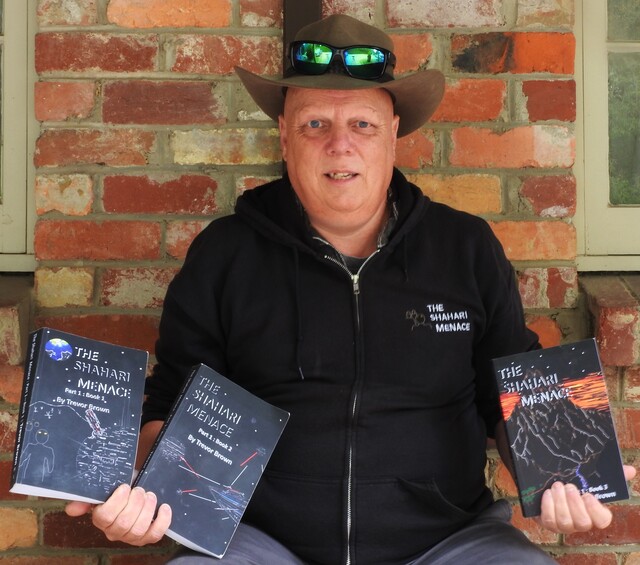Shane Tuck showed signs of decline from multiple head-knocks early in his storied 173-game AFL career, a Coronial inquest has heard.
Tuck, 38, died with severe stage-three chronic traumatic encephalopathy (CTE).
His affliction however couldn’t be definitively diagnosed during life, the hearing was told on 19 July.
A CT brain scan in 2009 produced a normal result.
And despite psychiatric treatment, Tuck was tormented by voice hallucinations, suicidal thoughts and depression.
He took his life at his parents’ Berwick home on 20 July 2020.
State Coroner John Cain is investigating the links between Tuck’s head injuries during football and boxing and CTE.
He will look at whether AFL and boxing’s approach to the risk of CTE is “reasonable and proportionate”.
Counsel Assisting the inquiry Gideon Boas told the inquiry on 19 July that the signs of Tuck’s decline were noticed by wife Katherine as early as 2006.
After head knocks in games for Richmond Football Club, he would retire to bed early, suffer headaches and not appear to be himself.
In 2010, he reported residual problems with concussions, dizziness and forgetfulness.
He was treated for depression, anxiety and heart palpitations, as he became disengaged from Katherine and their two children.
He started to believe he was ‘letting God down’ and having trouble sleeping.
After retiring from football in 2013, Tuck quit an apprenticeship and fought four times as a professional boxer.
In his first bout in 2015, he suffered a ‘severe knock out’, lost consciousness and was admitted to The Alfred hospital’s emergency department with a brain hematoma.
Soon after he reported suicidal thoughts. He was cleared to fight again after two ‘normal’ MRI scans.
In 2018, he first reported hearing voices telling him not to eat, and he started drinking heavily.
After suicide attempts and auditory hallucinations, he was admitted to psychiatric units, including Casey Hospital in April 2020.
Tuck was prevented from leaving Casey due to hearing voices commanding him to kill himself. He was discharged in May after agreeing to get counselling and take medication.
A month before he died, Monash Health was contacted by Tuck’s mother about him “actively and loudly responding to voices”.
The Continuing Care Team assessed this as “part of the fluctuating course of Shane’s psychotic symptoms”, Mr Boas said.
At the time, Tuck was on a 26-week community treatment order while living with his parents and being treated by the Continuing Care Team.
There were plans for a neurology assessment and MRI brain scan.
Monash Health’s procedures have since been updated to insist that such clinical deteriorations as reported by Tuck’s mother are “escalated” to the consultant and/or team manager.
State Coroner John Cain said he was “satisfied” that he did not require to investigate Monash Health any further.
Mr Boas cited CTE as an “increasing public focus” with high-profile cases such as Tuck and other late footballers Graeme ‘Polly’ Farmer, Danny Frawley and Heather Anderson.
Studies suggest that at least 17 per cent of people suffering repetitive concussions or mild brain injuries develop CTE.
“The severity of the disorder appears to correlate with the length of time engaged in the sport and the number of traumatic injuries.”
CTE is associated with not just concussions but repetitive head trauma without symptoms, Mr Boas said.
Most concussions happened in community sport and were not reported.
The Australian Sports Commission estimated at least 100,000 sport related concussions in Australia each year.
By the age of 10, one in five children were concussed. And 25 per cent of those happened in sport.
At the inquest, US neurosurgeon Dr Robert Cantu said that the AFL was doing a “very fine job” in identifying and treating concussion.
However, sub-concussive hits also contribute to CTE, he said.
“Hits that don’t cause symptomatic brain injury also can contribute to CTE and do contribute to CTE. And those are the majority of hits that somebody takes over their career.
“The number of contests you play would increase your risk for CTE cumulatively if you played enough years.”
In cross-examination, the AFL’s lawyer Mr Ihle posited that the game’s rule changes for “high contact infringements”, as well as in tribunal guidelines, were minimising head impacts.
Dr Cantu replied: “My interpretation to them was that they were trying to reduce concussion and the focus was not so much reducing the amount of head contact that was occurring.”







